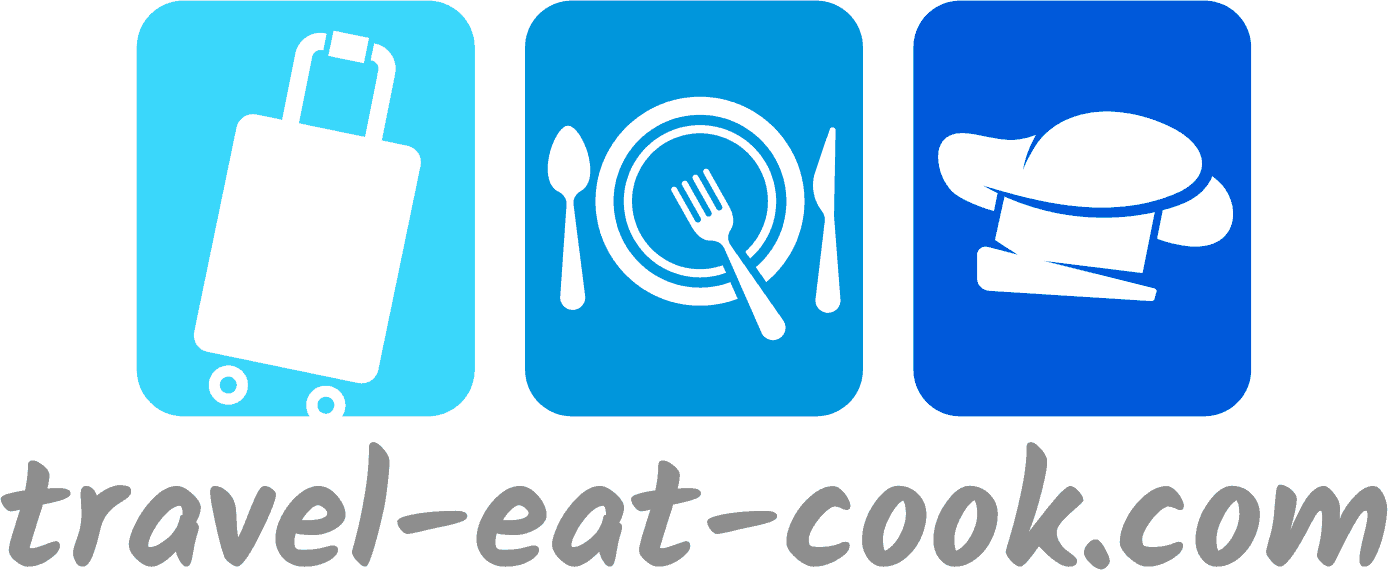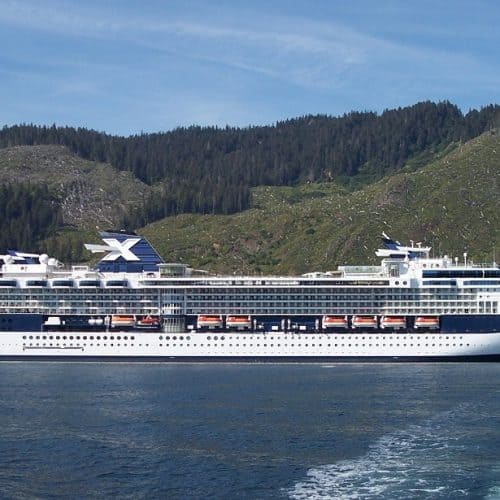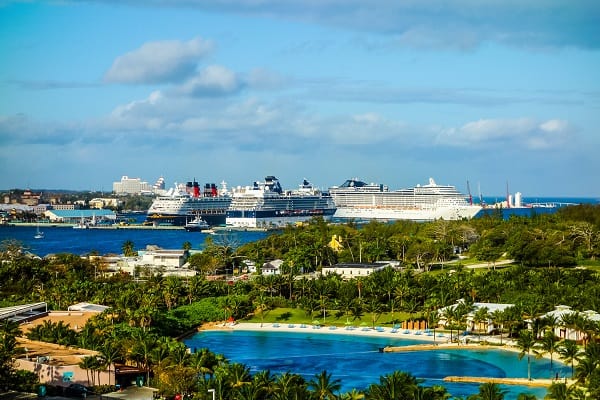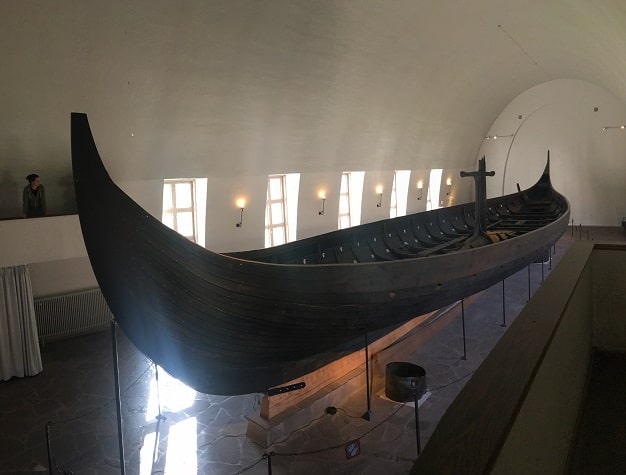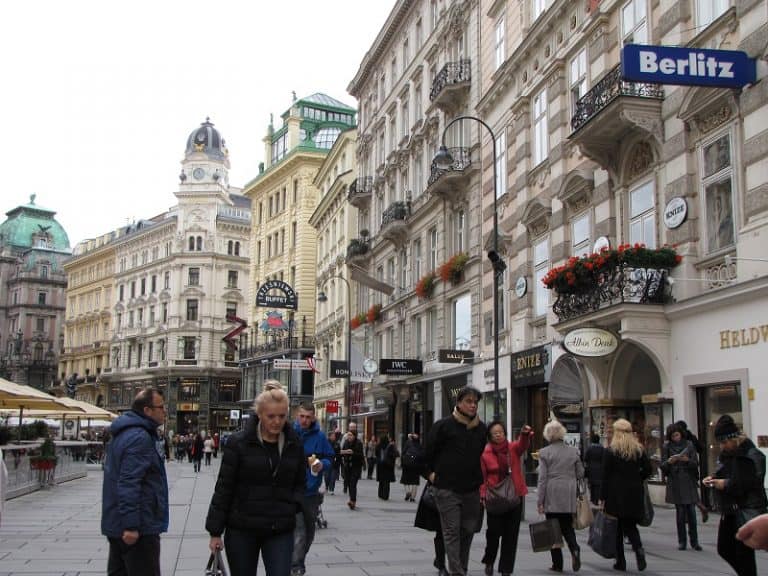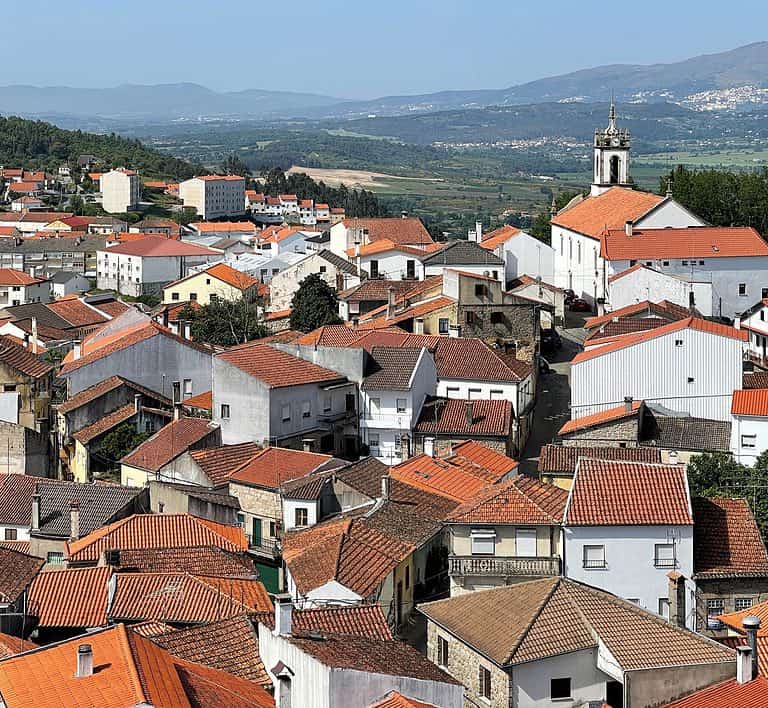Visit Prague? A 3 Day Itinerary Perfect For Your First Trip
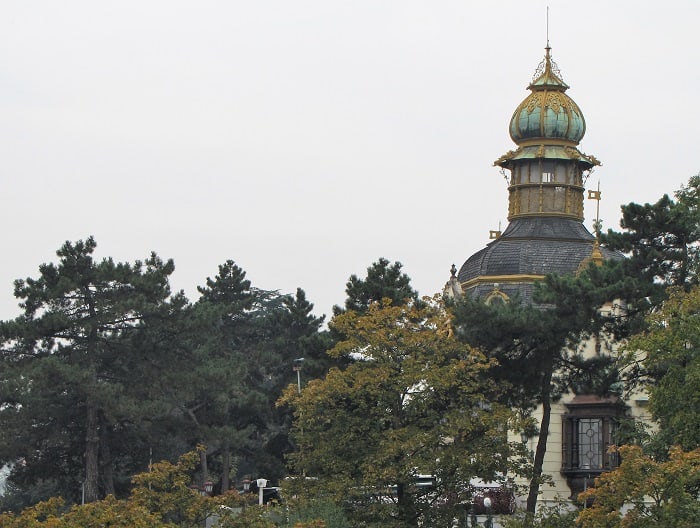
Today, with the European Union and the Schengen Area formation, there is a more open European Continent. However, the countries that make up Europe maintain their independent and unique identities. When you visit Prague, these unique qualities stand out.
This article may contain affiliate links. We may earn a commission if you use these links to buy products or services. Please see our disclosure policy for full details. Thanks.
Visit Prague: The Start of Our Three-City Tour
We fly to the capital of the Czech Republic, via London. The Prague airport is about 40 minutes from the city center by public transport (bus+metro) which is a fast and inexpensive trip. But with the connection through Heathrow, travel time from portal to portal has been about 18 hours and we chose to take a cab to our hotel.
The Ventana Hotel In Prague – All I can Say Is “Wow!”
I found the Ventana Hotel, which is in the center of the City just off the main square. The Ventana is a delightful old-world hotel. Our room turned out to be one of the hotel’s “Old Town Square Suites.” These suites each have a sitting room, bedroom, and lovely en suite bath.
Our suite is on the 2nd floor, and the sitting room sports a small balcony. This façade of the hotel overlooks Old Town Square. One afternoon, I watched a marching band in full regalia parade through the square right past the hotel.
I could envision myself as royalty of this beautiful Capital City, standing on the balcony, waving to the masses gathered in the square.
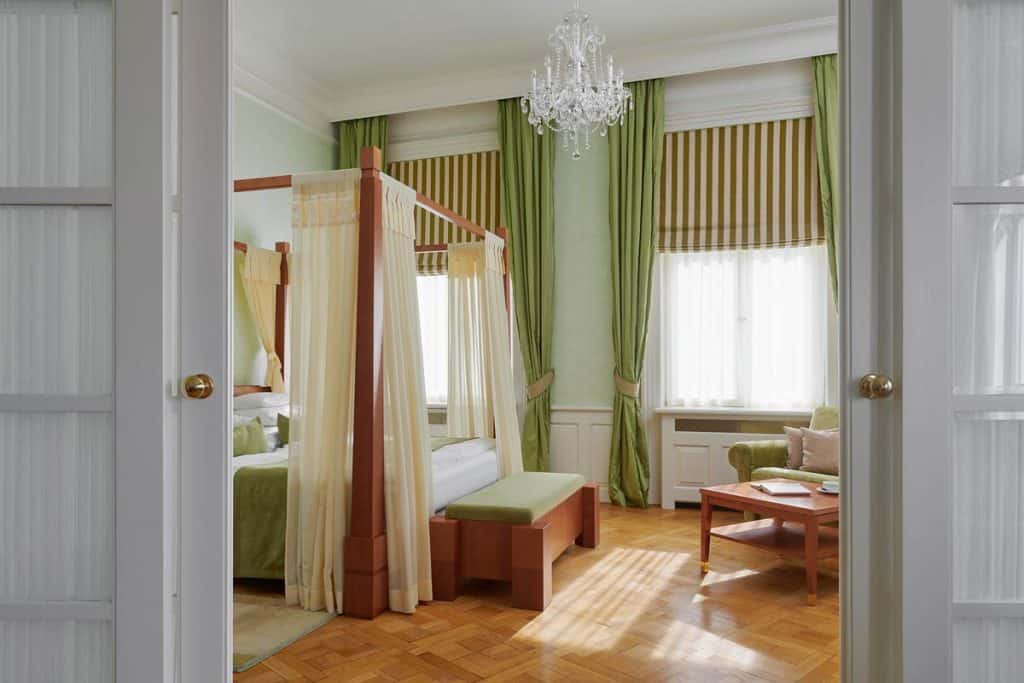
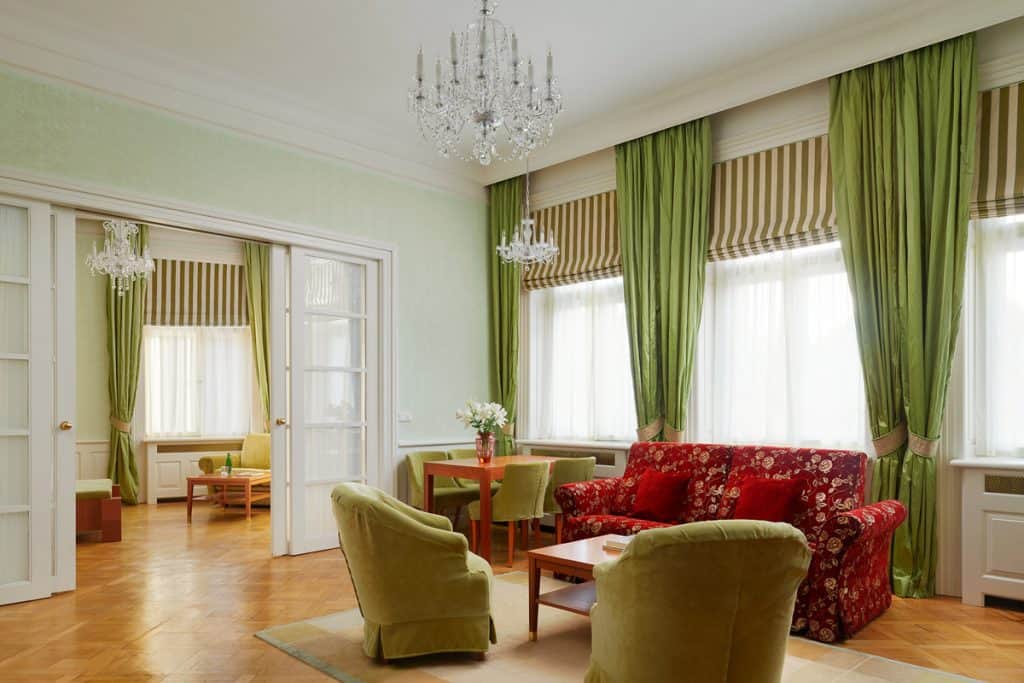
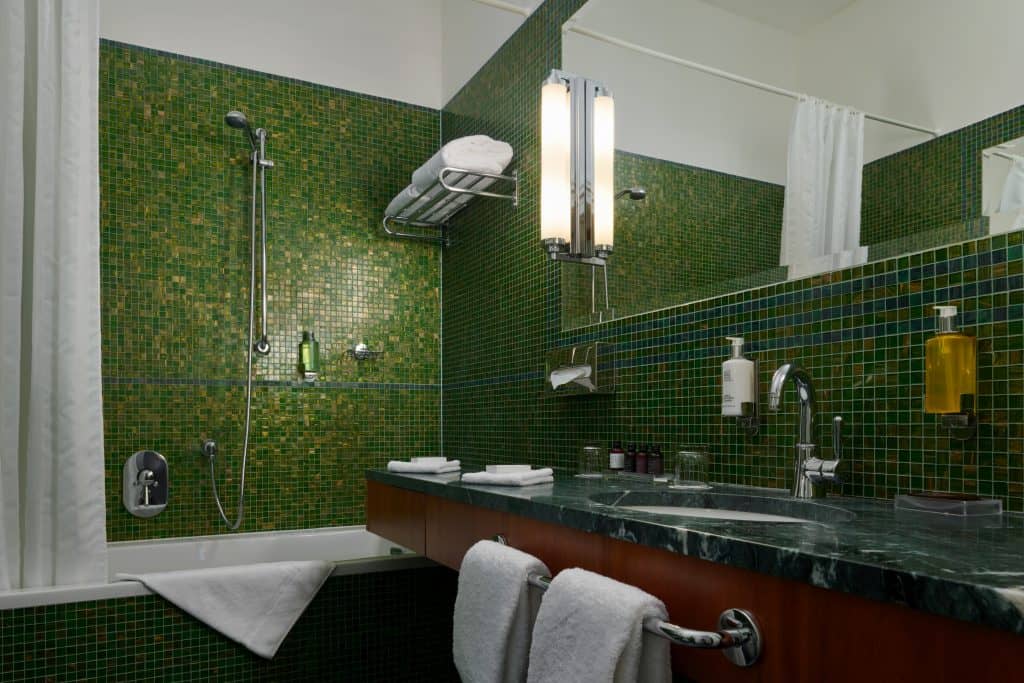
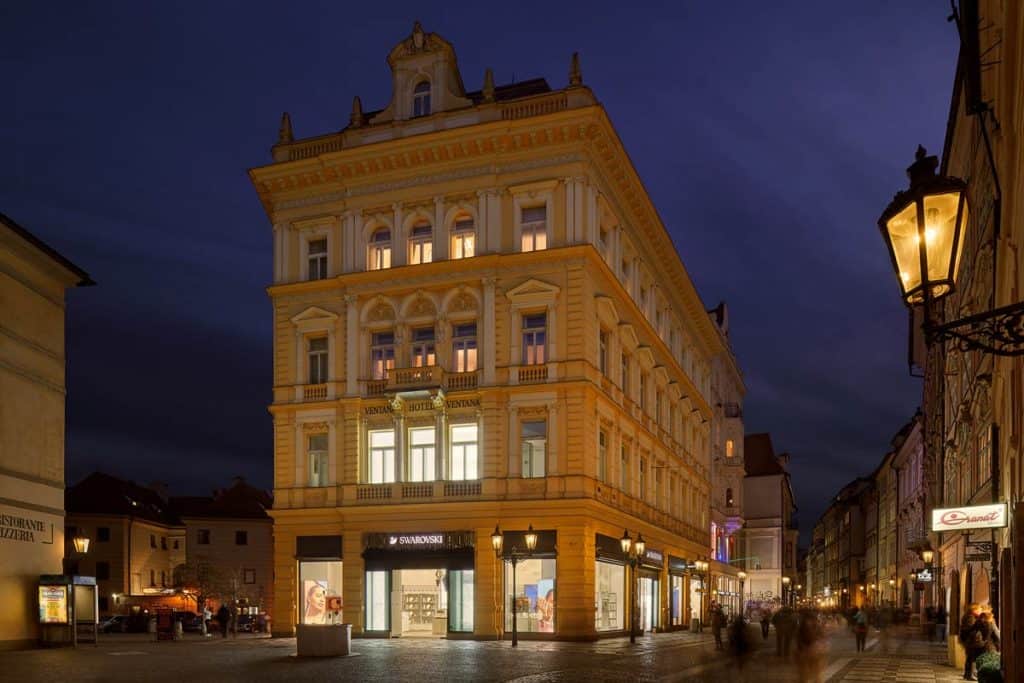
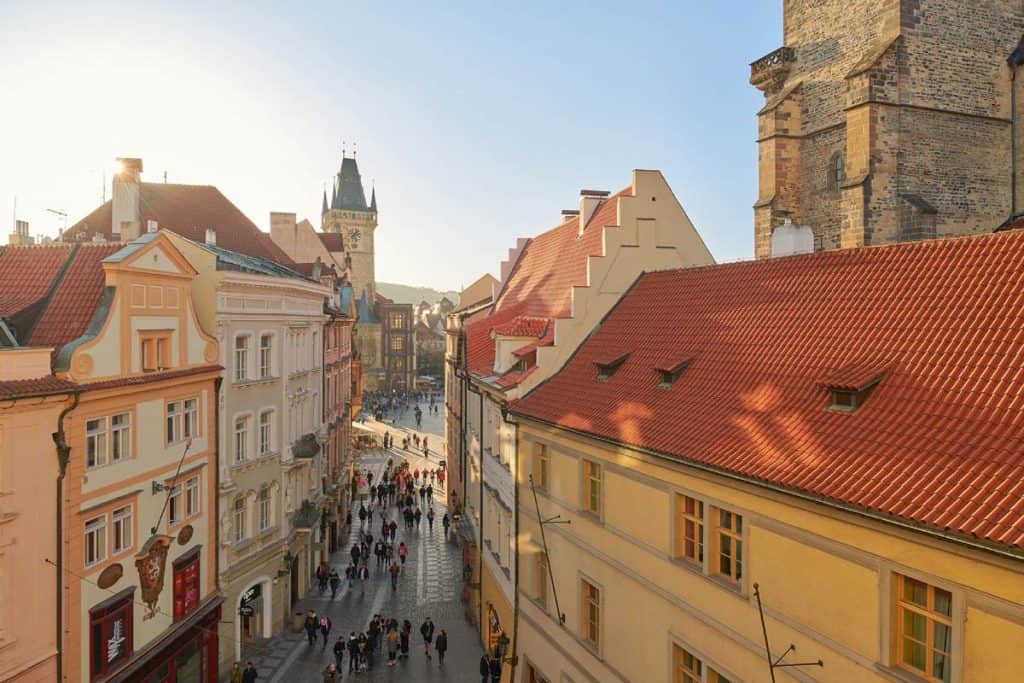
Usually, when we get this good of a room, we end up leaving the next day and don’t have the opportunity to enjoy the space and amenities. This time we were thrilled to be in place for the next four nights!
We look forward to a good night’s rest and are excited to start exploring Prague tomorrow.
Day 1: Visit Prague – Starts at Pilsner Urquell Brewery in Pilzen
We start our Prague itinerary on a day trip to Pilzen, a village about 45 miles west. Here we visit Pilsner Urquell, the home of the first “pilsner” lager. Pilsner Urquell has been brewing the same recipe from this location since 1842. Pilsner-style beer is very popular in Europe and this is where it all started.
Pilsner Urquell Brewery
The tour starts by walking the grounds from the new brewery to the old. We get a short lesson on how to brew beer, including where they grow their hops. For me, a person who knows nothing about beer, it was good to learn exactly what hops are and why they are in beer.
Just in case you are like me and have always wondered, hops are the flower of the hop plant “Humulus lupulus.” Hops are added to the brew as a flavoring agent (they add the bitter, citrus, floral, and fruity notes to your beer) and a stabilizer.
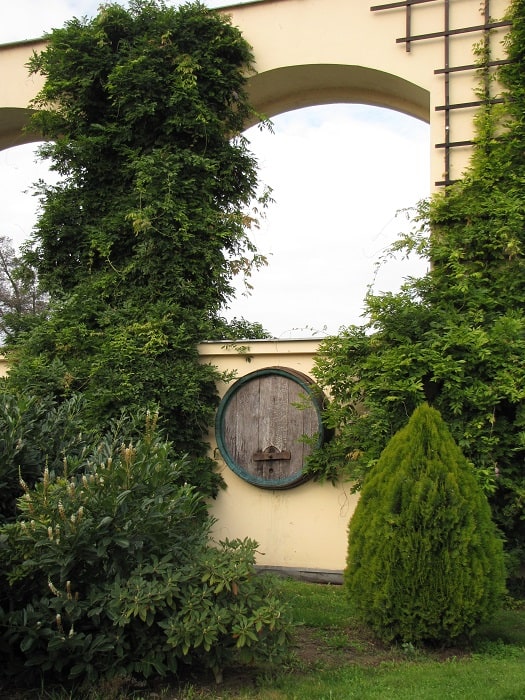
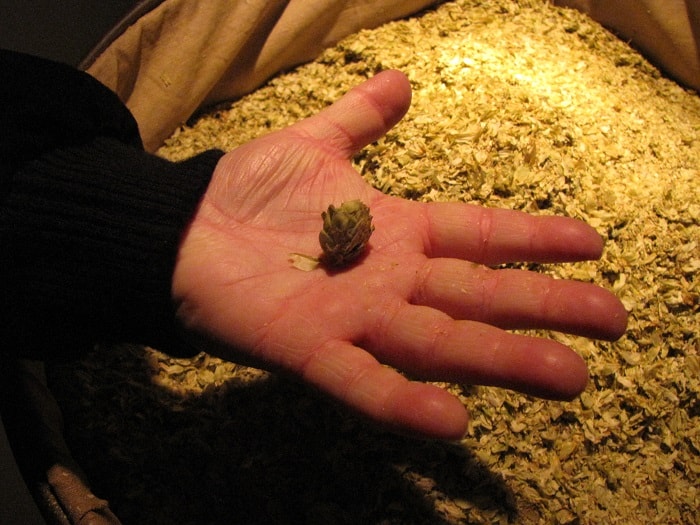
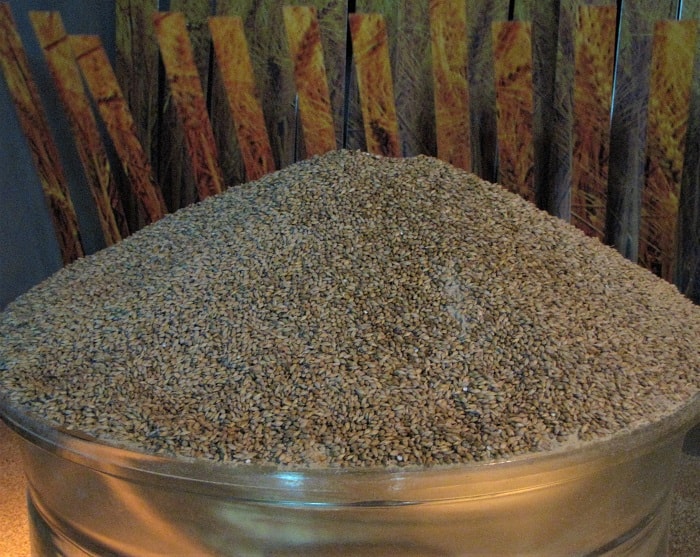
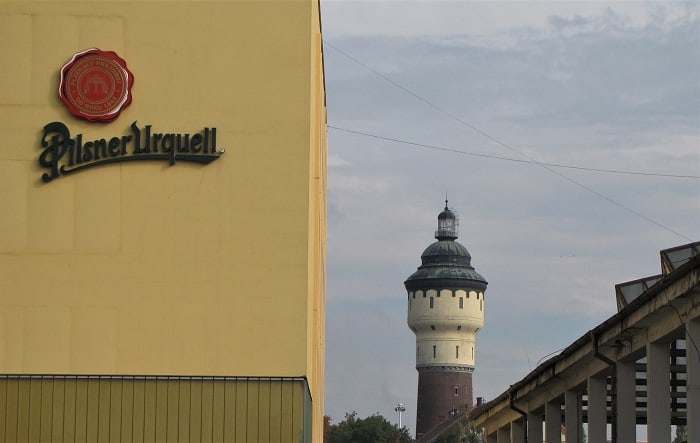
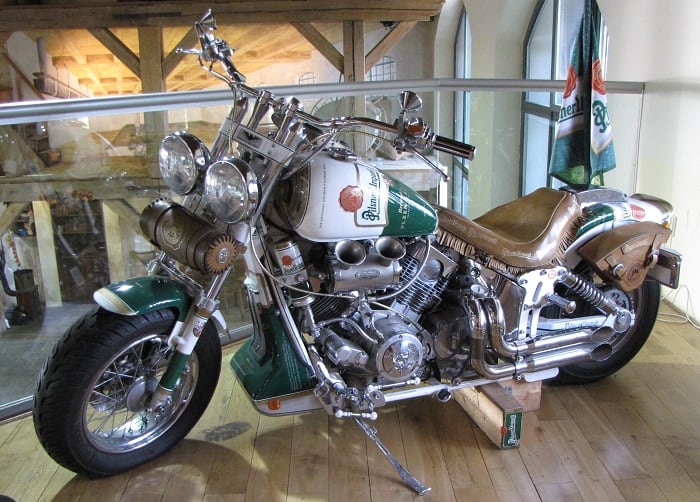
We walk through the new brewing area with its beautiful machinery, and then we head down into the tunnels where the beer is placed in barrels to ferment. As we walk deeper into the tunnels, the air cools considerably.
When we get towards the end of the tunnels, we are greeted by one of the senior brewmasters who treats us to a glass of the nearly finished (not yet pasteurized) pilsner. Delicious!
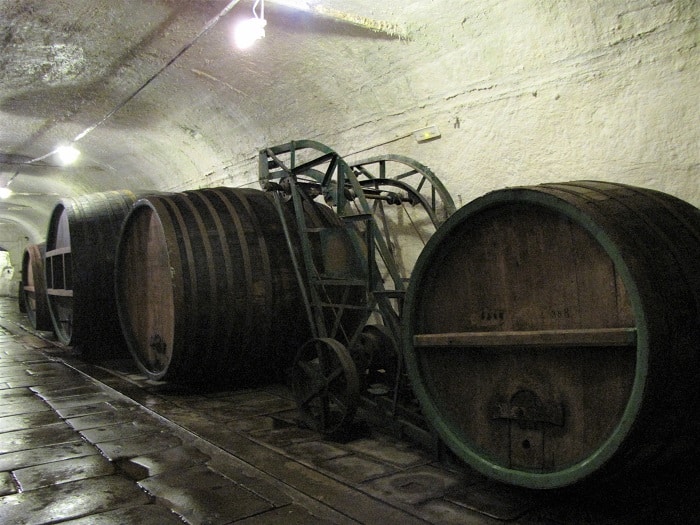
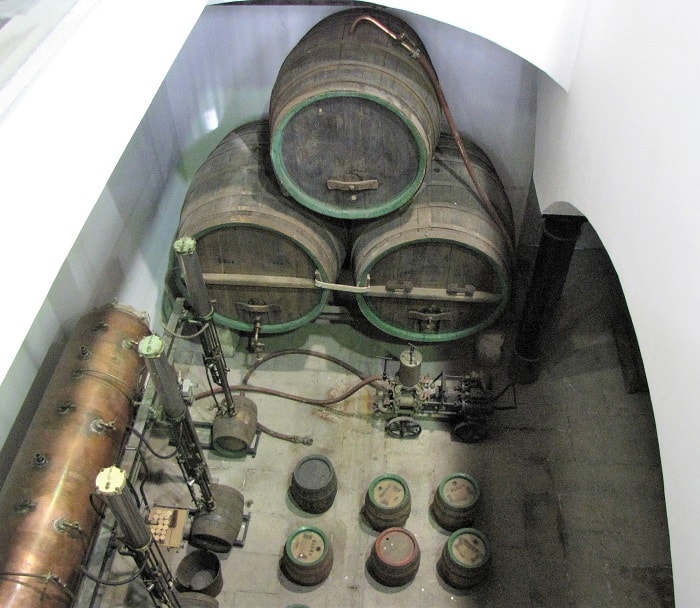
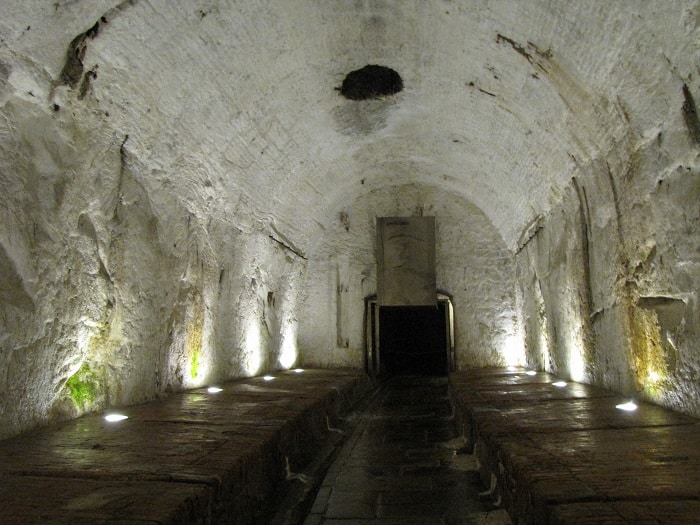
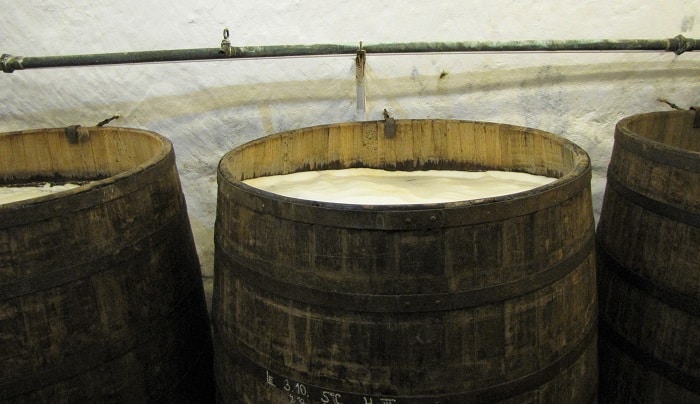
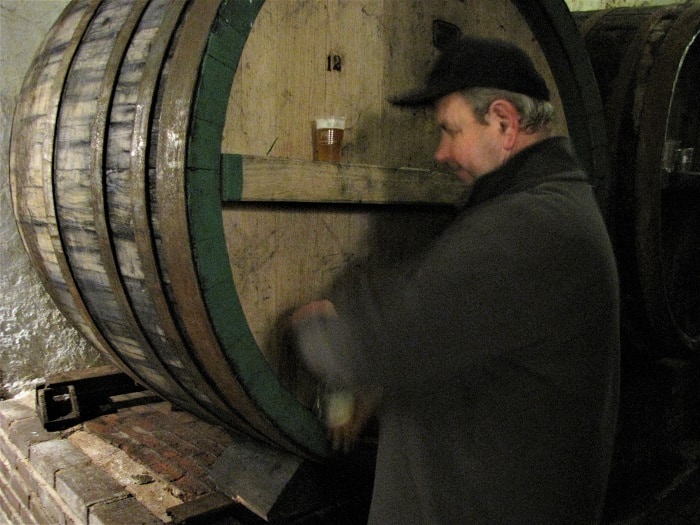
Tour Information
Tours of the Brewery are offered to the public every day in six different languages. The price per person is currently CZK 250 (about $11 US).
Wenceslas Square And The Velvet Revolution
After returning to Prague, we make the short walk from our hotel to Wenceslas Square. This is the location in Prague where in November of 1989 a series of protests with over 500,000 people joined together to end Communist rule. This transition of power was named the Velvet Revolution as it was for the most part non-violent.
This square is the center of business in the New Town of Prague. Here you will see large blocks of office buildings typical of the 1960s and 1970s. The two most iconic sights on this large square are the Wenceslas Monument and the National Museum of Prague.
The Wenceslas Monument depicts Saint Wenceslas on a horse carrying the country’s flag. Wenceslas I, Duke of Bohemia was deeply respected for his faith and charitable deeds. He of course was also wealthy and used his monies to found the Rotunda of Saint Vitus at Prague Castle.
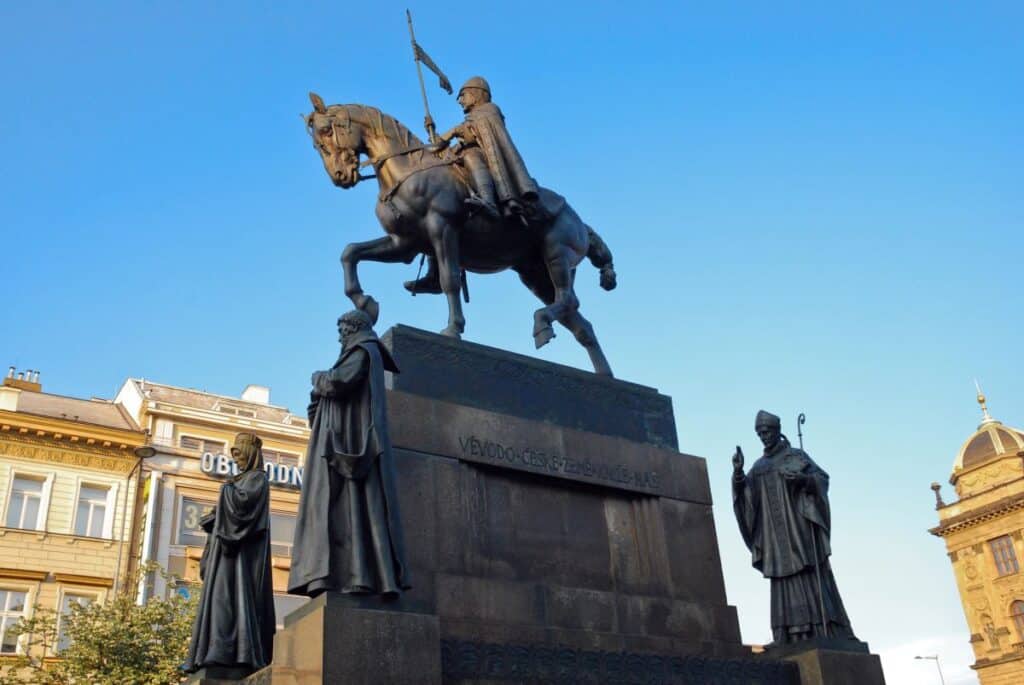
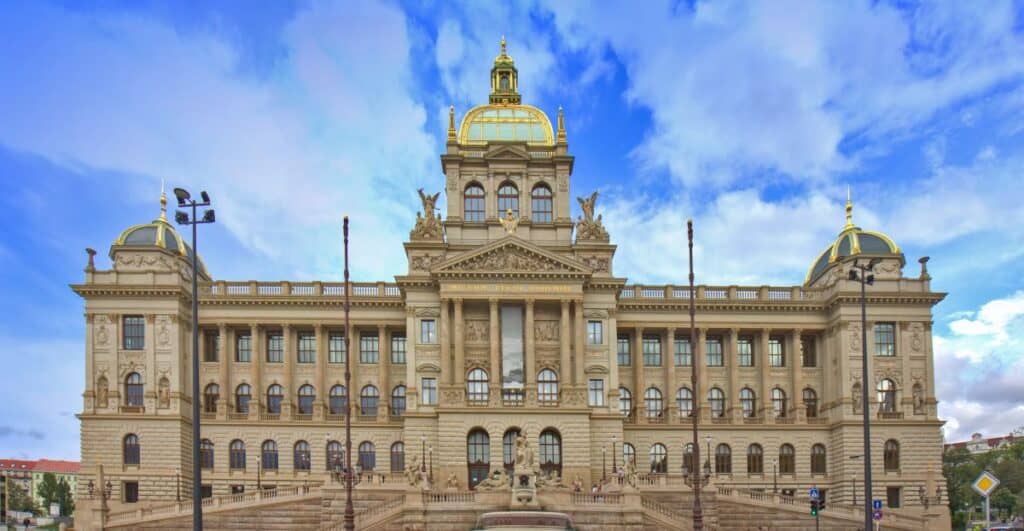
Day 2: A Three-Hour Guided Tour of Prague
The second day starts with another lovely breakfast at the hotel, after which we head out to Prague’s Old Town Hall (Staromestski namesti) to meet up with our guide for a three-hour walking tour.
We chose the “Explore Prague Historical Tour,” which starts in the Square and circles around the City. This tour hits many of the well-known and influential historical sites. The Astronomical Clock, the Medieval City Walls, the Dancing House, the Jewish Quarter (including the old Jewish cemetery), and Letna Park (some of the best views of Prague) were among our stops.
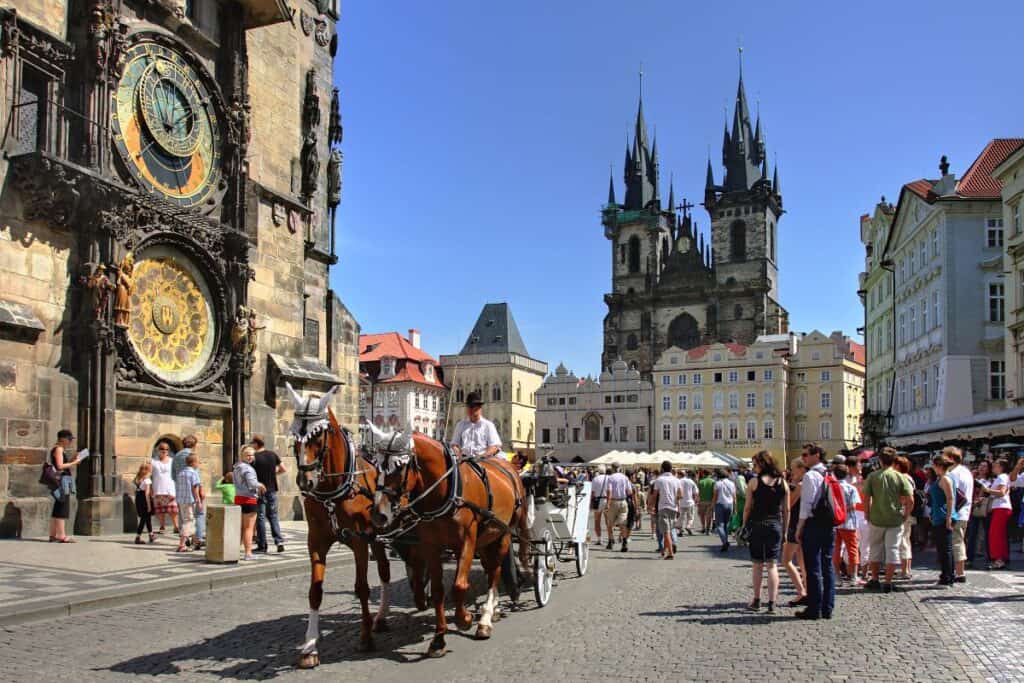
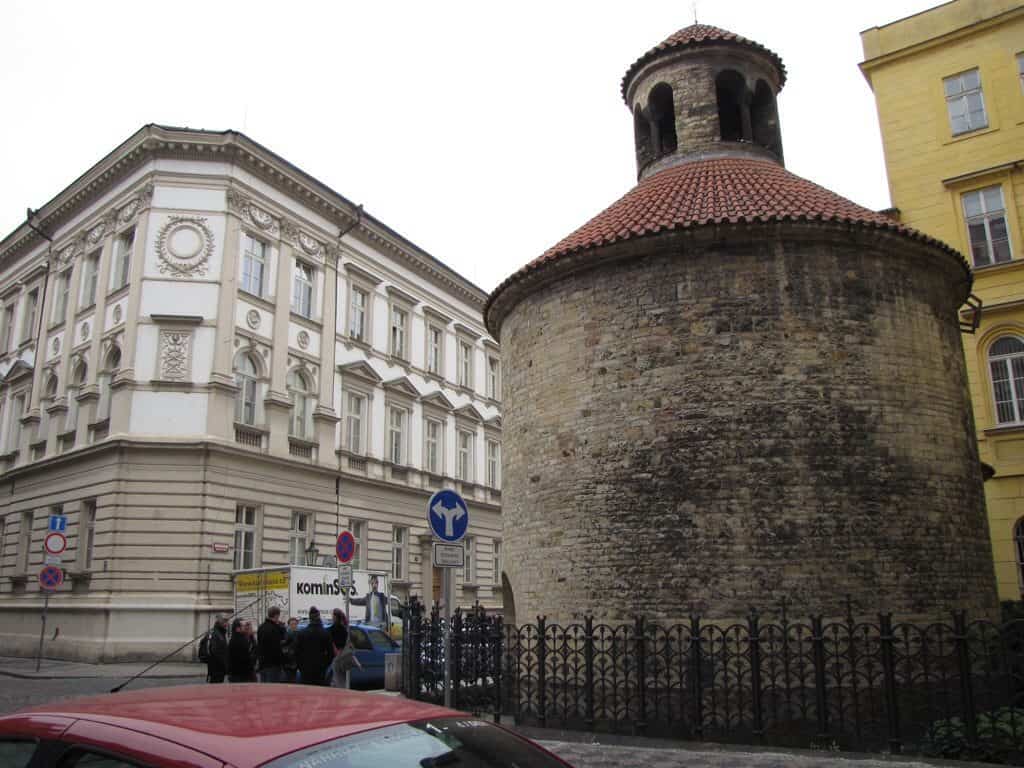
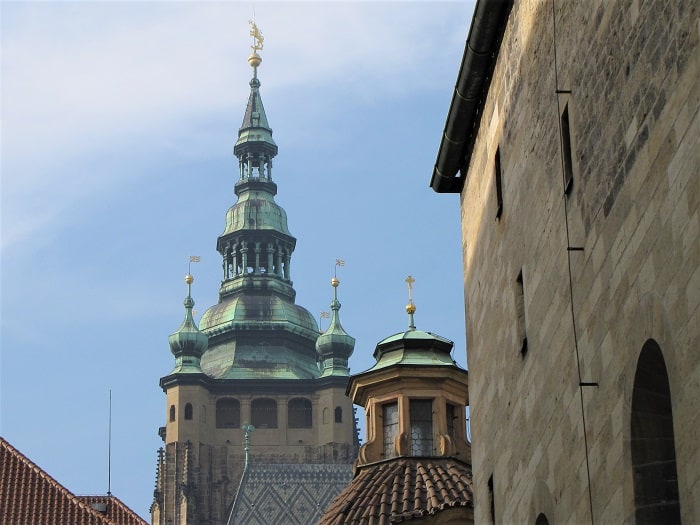
The Naked Tour Guide provides several different walking tours in Prague. These folks do awesome, small group tours, with never more than eight people on tour.

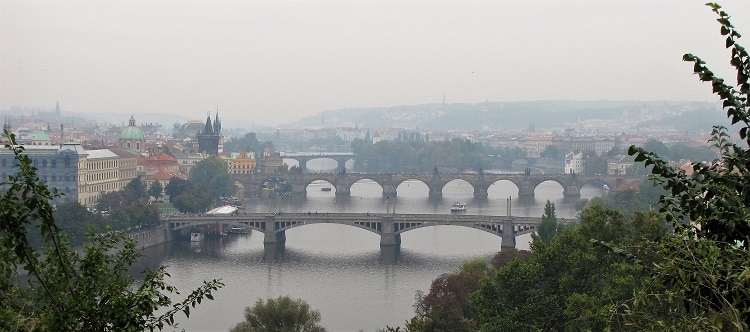
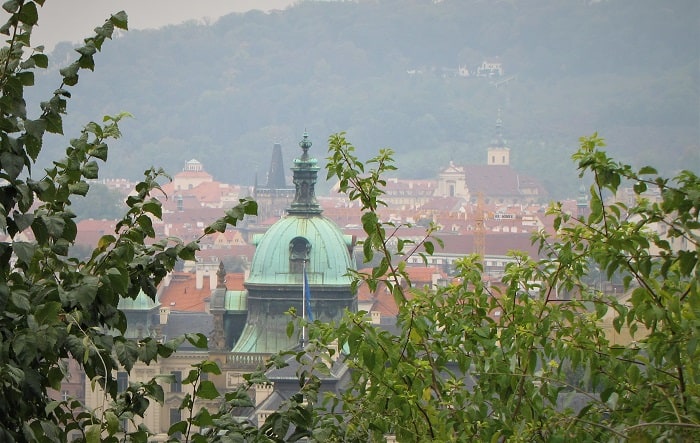
Our Guide on this Visit Prague Walking Tour
Imogen is from the US and just finishing up her master’s in international studies at the local university. She is very engaging and knowledgeable about Prague. I spend so much time listening to Imogen; that I often forget to take photos.
But the third picture below kind of sums up the city. The building on the right is from 1190, and the building on the left 1890. This place has been around for a while.
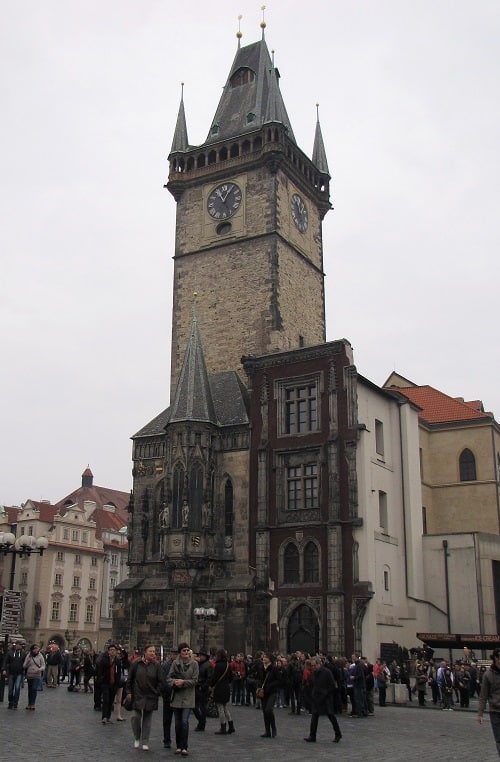
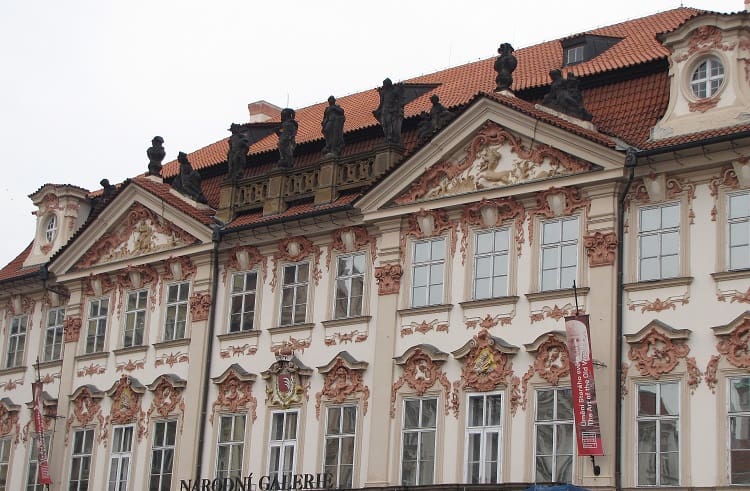
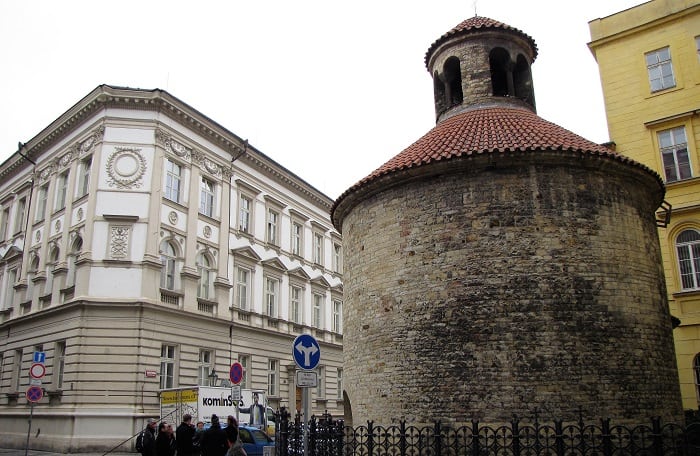
Imogen takes the time to get to know each of the couples in the group and give suggestions on their coming travels. I’d highly advise giving these guys a try when visiting Prague.
The historic center of Prague is so important, that along with the castle complex, it has been declared a Unesco World Heritage Site.
Tour Information
Tour costs with Naked Tour Guides start at CZK 600 (about $27 US) per person. Our tour (Historical Prague) was CZK900 (about $40) per person.
After the tour
Heading back into the old town square, we cross over the Vltava River on the Charles Bridge. We stopped a few times to admire the statuary on the bridge as well as the river itself.
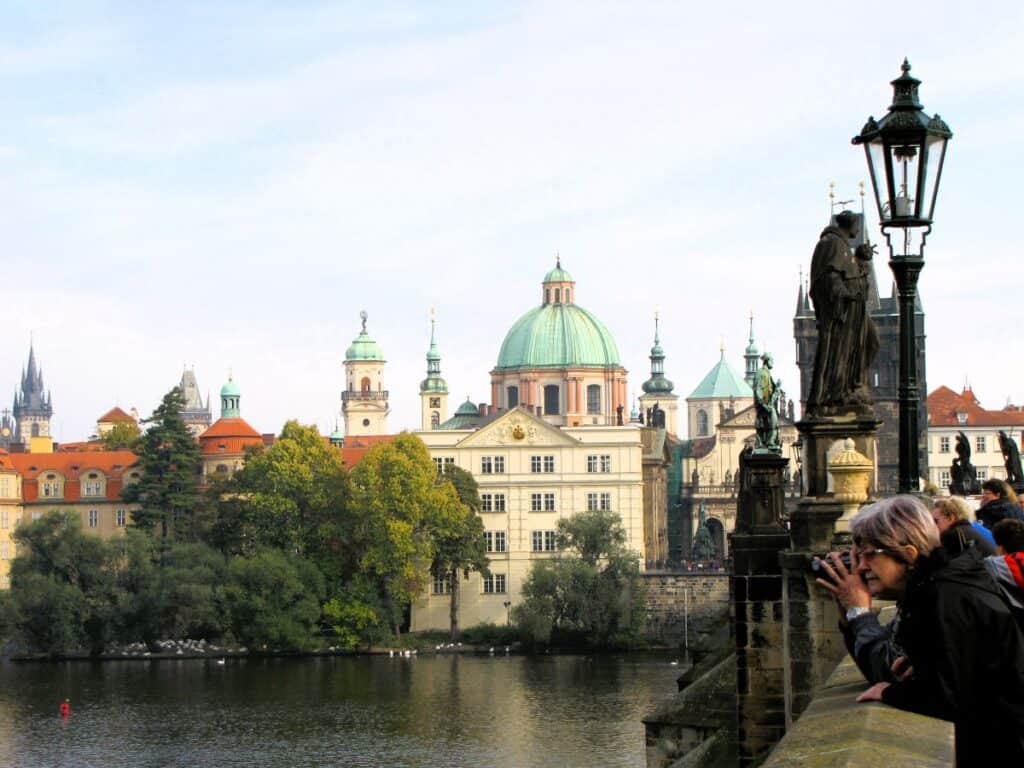
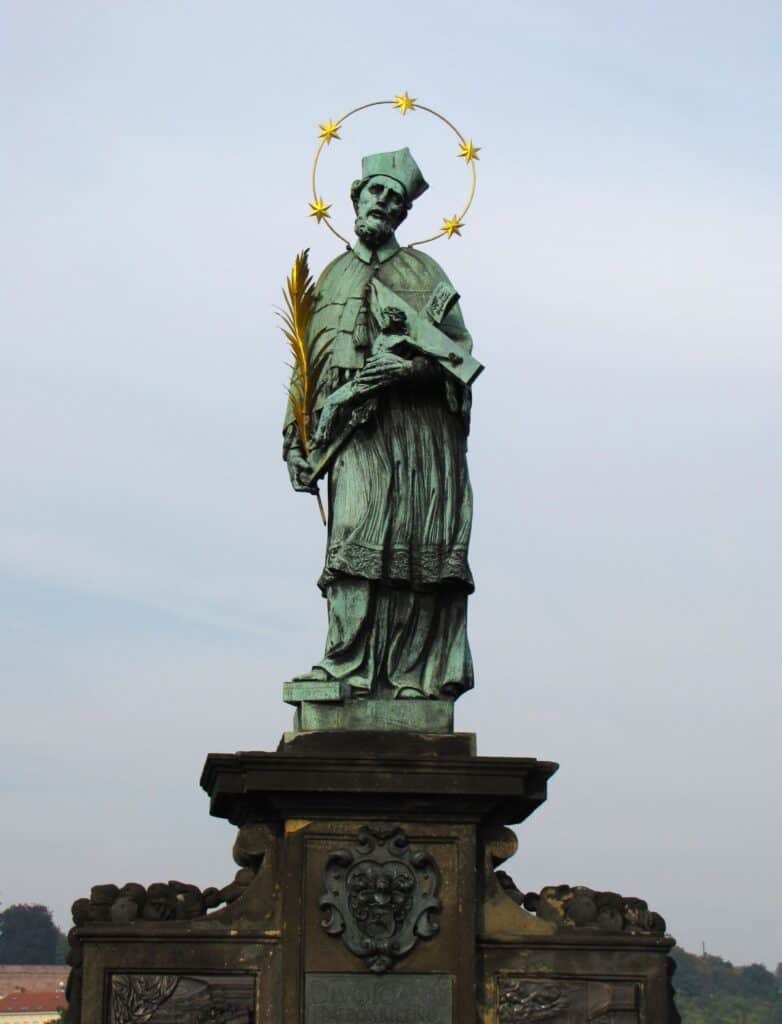
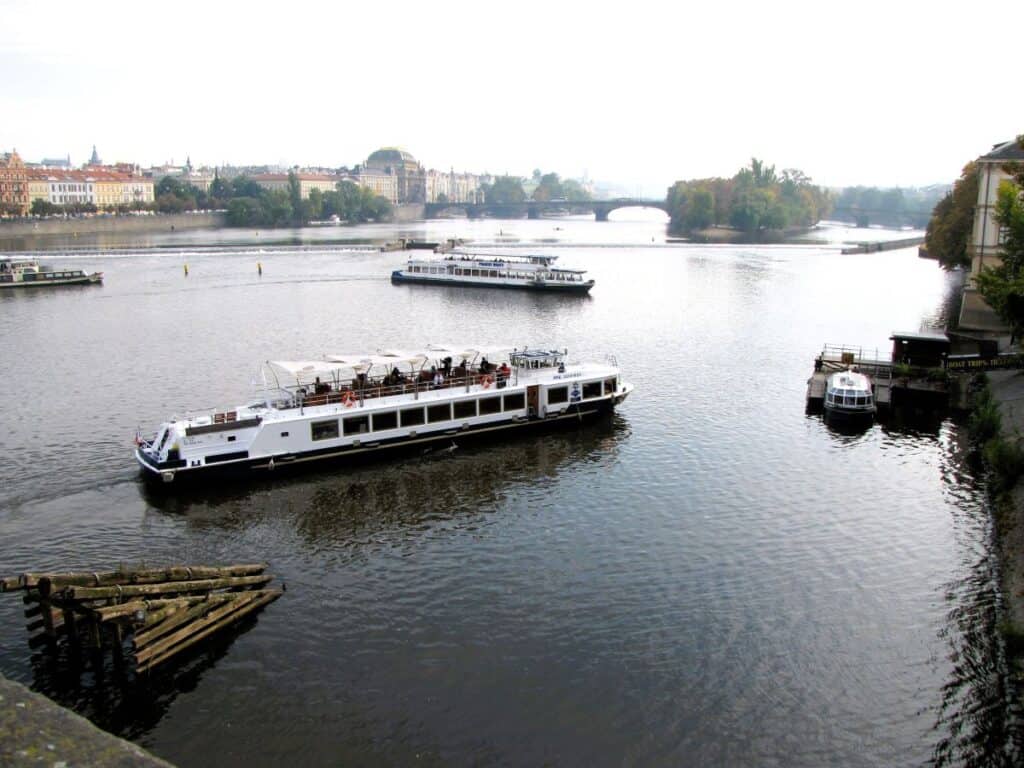
On the other side of the bridge, we come across the Church of St. Salvator. Outside the church is a billboard advertising a recital of Haydn’s Requiem that evening.
We decided on the spot this would be our evening’s entertainment. With that decision, we head back to our hotel. Still, a bit jet-lagged we wanted to get a quick nap in before we headed out for dinner and the concert that evening.
Schnitzel & Goulash a traditioinal Dinner
We decided to eat at one of the many restaurants in the square on the way to the concert. I am looking for a schnitzel. I love schnitzel, and nearly every restaurant here has this on the menu. Schnitzel is a typical dish in this region made with pork or chicken, or the most famous, veal. Tonight my schnitzel is chicken.
My husband discovered “hot wine” earlier in the day, and with the chill in the air is quick to order this again with his goulash. Our dinner is very traditional for the region and one we will likely sample again in Budapest and Vienna.
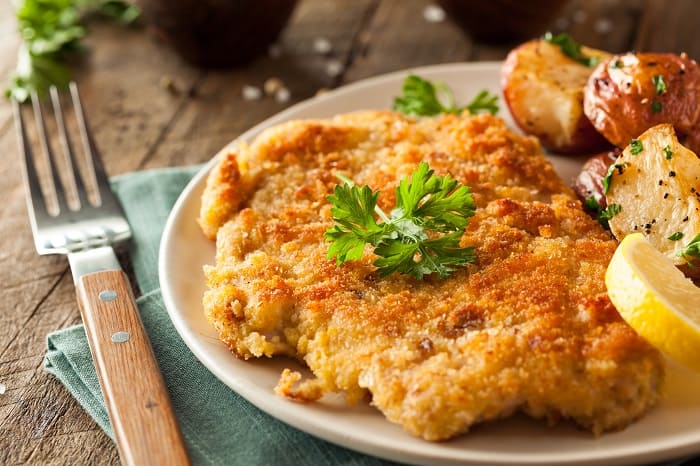

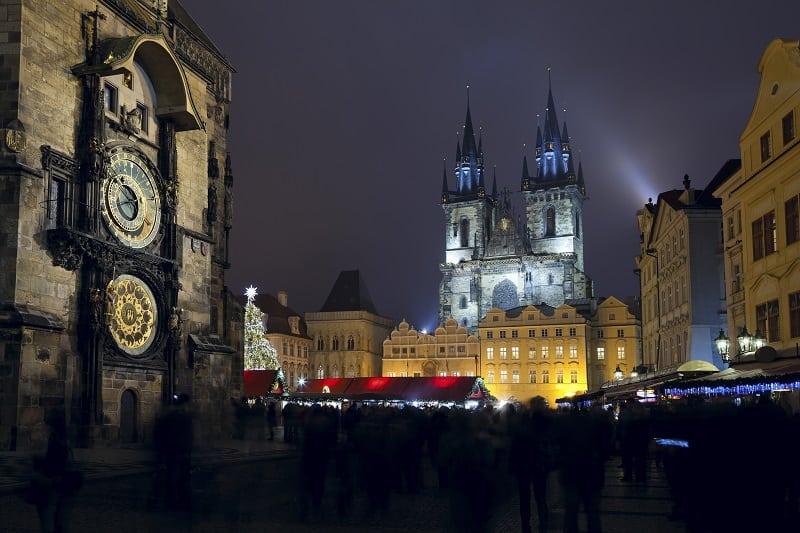
Classical Music in a Classical Setting
We arrive at St. Salvator just shortly before the concert begins. The church is beautiful inside, and the musicians are warming up. Warming up must be hard for them as I realize there is no heat in the church.
We sit on a wooden church pew, bundled up from the cold, and enjoy the performance. Haydn’s Requiem is a classic and beautiful piece, but we are glad when the concert is over so we can head home to our warm hotel room.
Day 3: You Must See Prague Castle When You Visit Prague
Prague is generally a pretty easy town to get around. However, you truly begin to understand why castles are always built on the highest ground when you walk up to the Prague castle complex.
As you start your uphill walk, you pass the Golden Lane. This area, inside the castle walls, is full of colorful old buildings that were originally built for the soldiers who protected the castle. Today these small houses are shops.
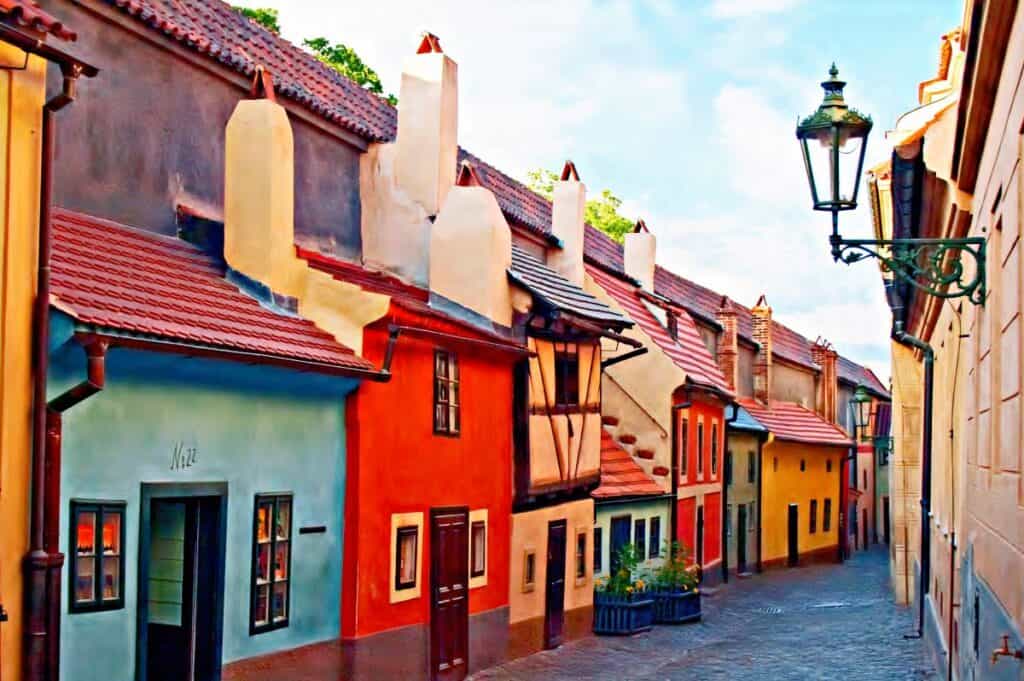
Prague Castle is grand as befits a European capital city. This is one of the largest castles originally showing medieval architecture. The original Gothic architecture is still prevalent, but the castle has been rebuilt many times in its more than 1000-year life. You will see examples of all the major architectural styles, Romanesque, Gothic, Renaissance, and Baroque today.
Inside the walls are many residences and, of course, the church. We tour the large halls of the old royal palace, see the crown jewels, and finally the St. Vitus Cathedral.
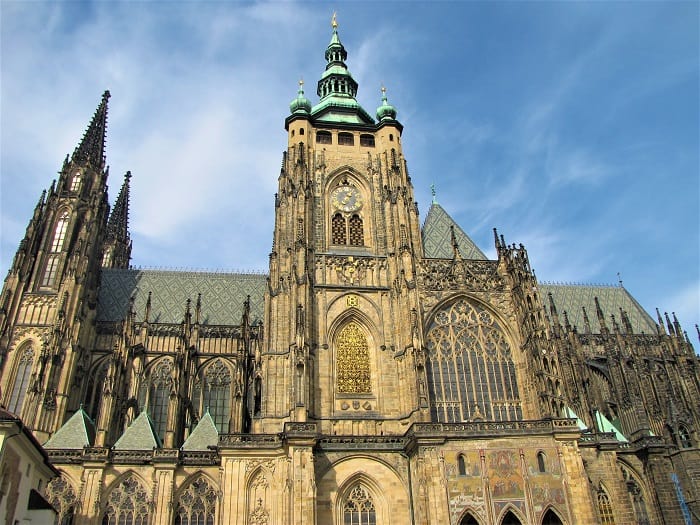

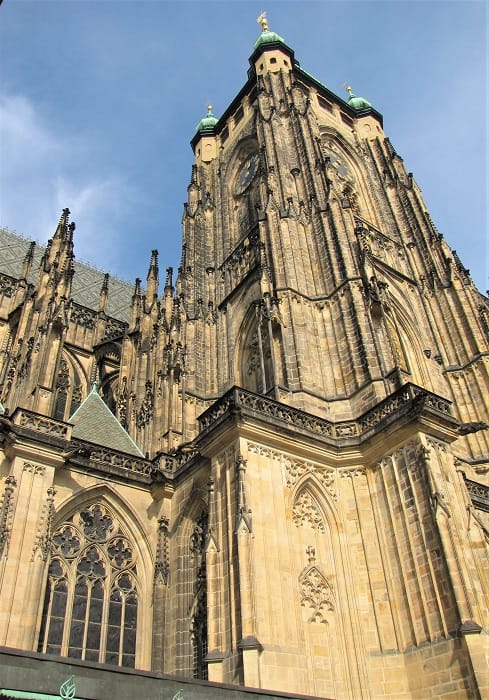
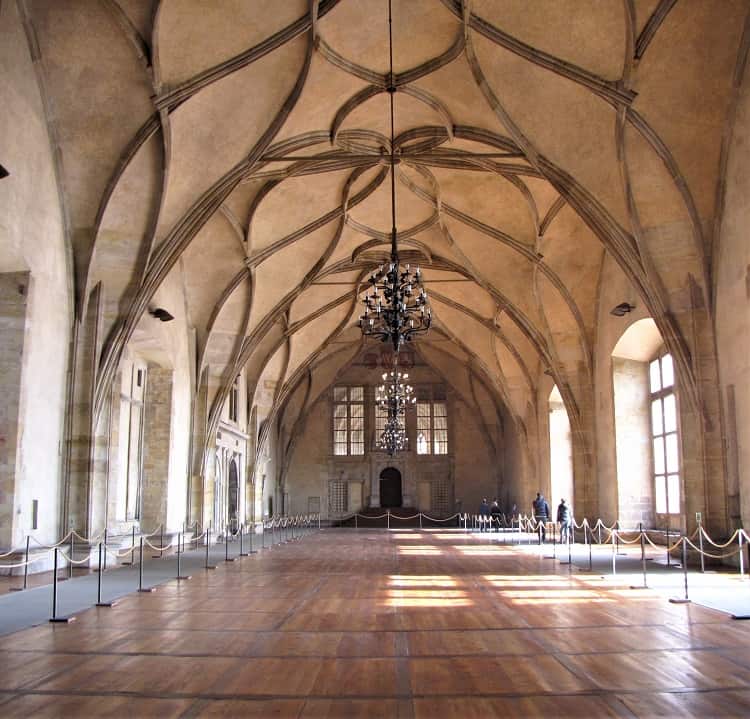
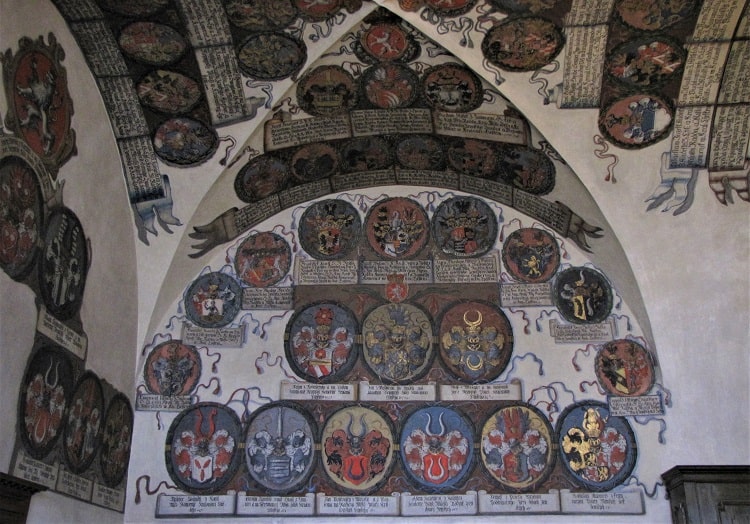
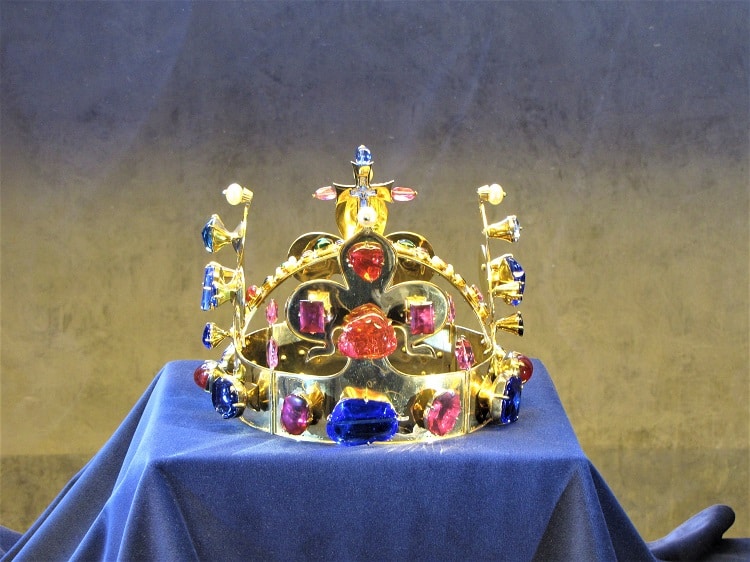
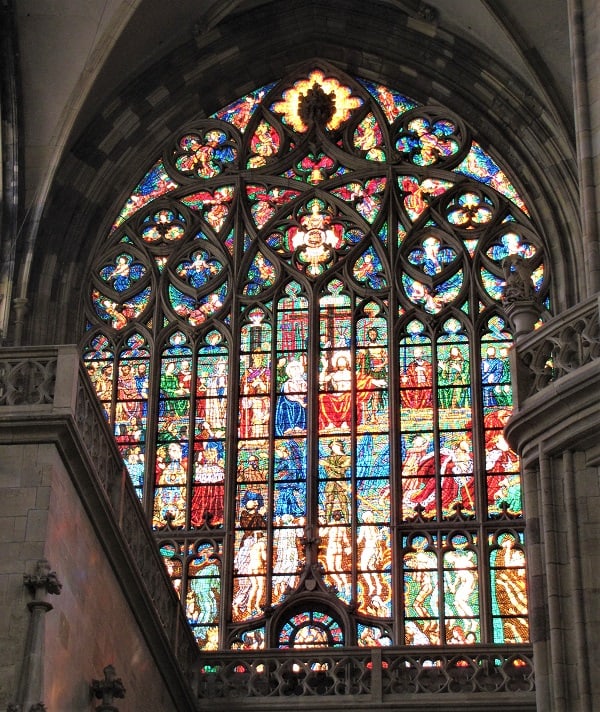
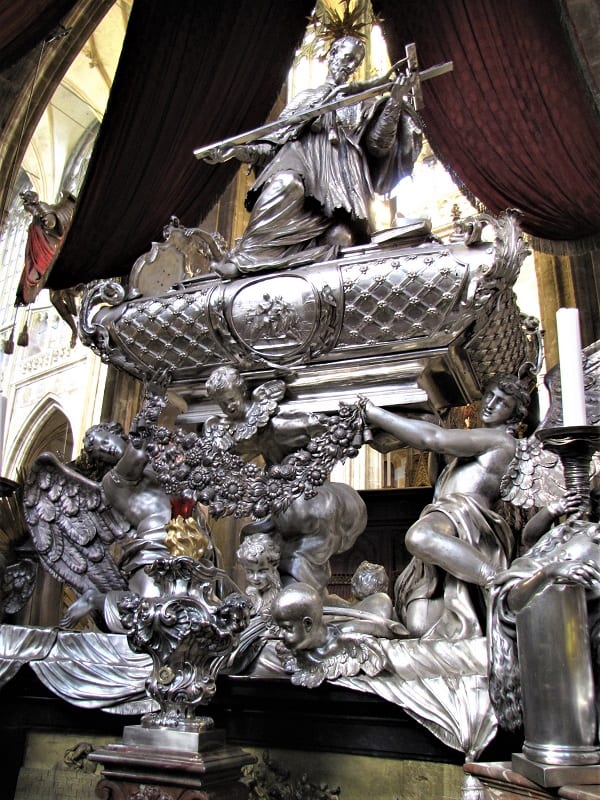
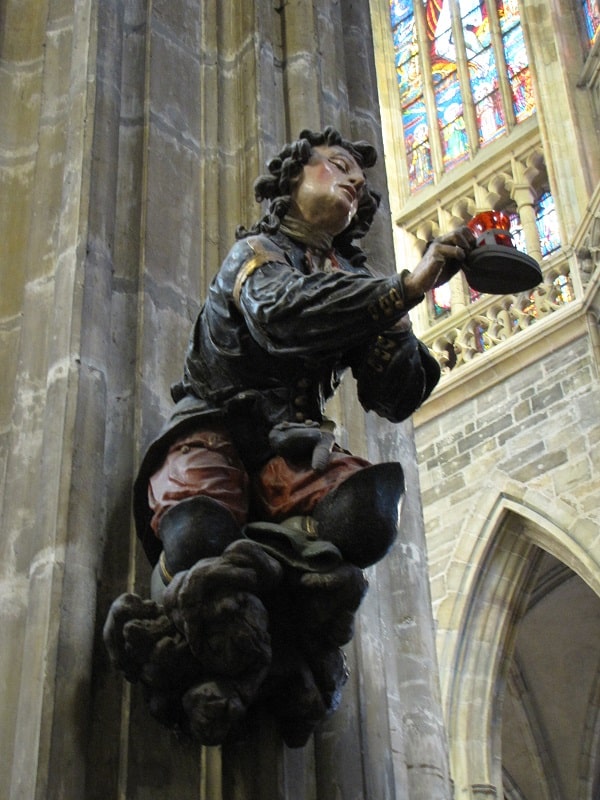
The Armory At Prague Castle
After the Cathedral, we take a quick stroll through the Armory. Here there is a fantastic display of medieval weaponry and torture devices!
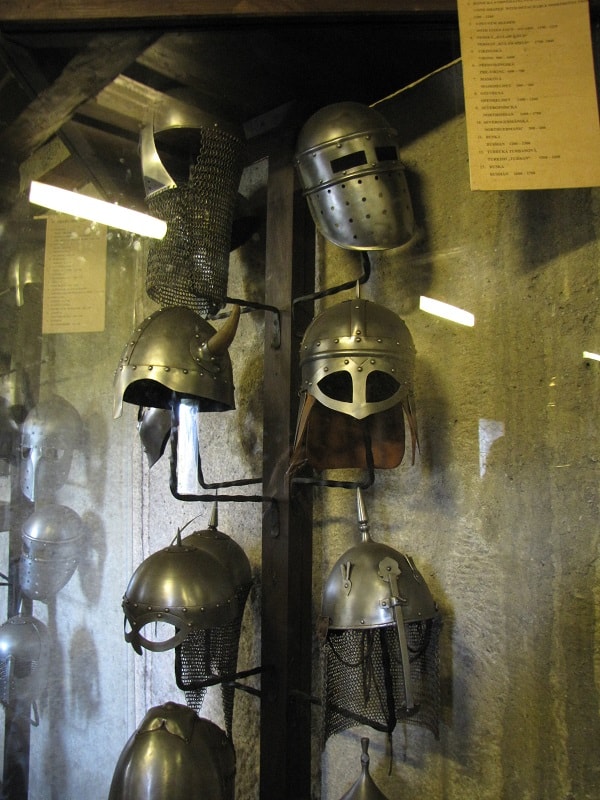
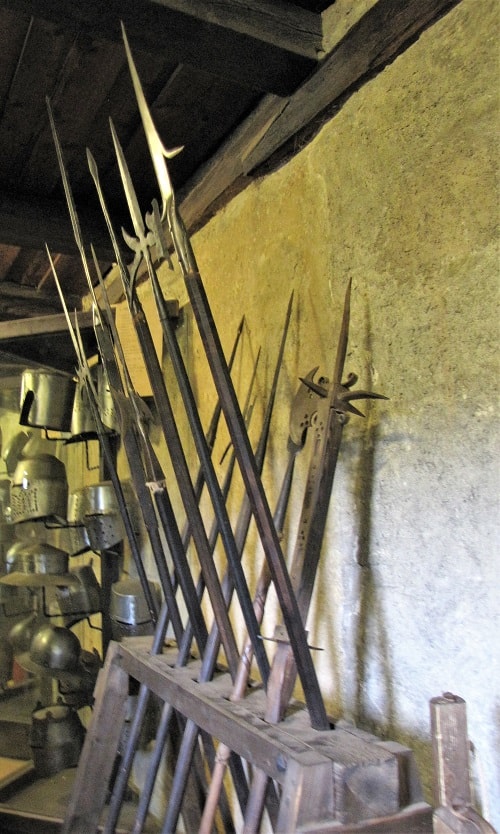
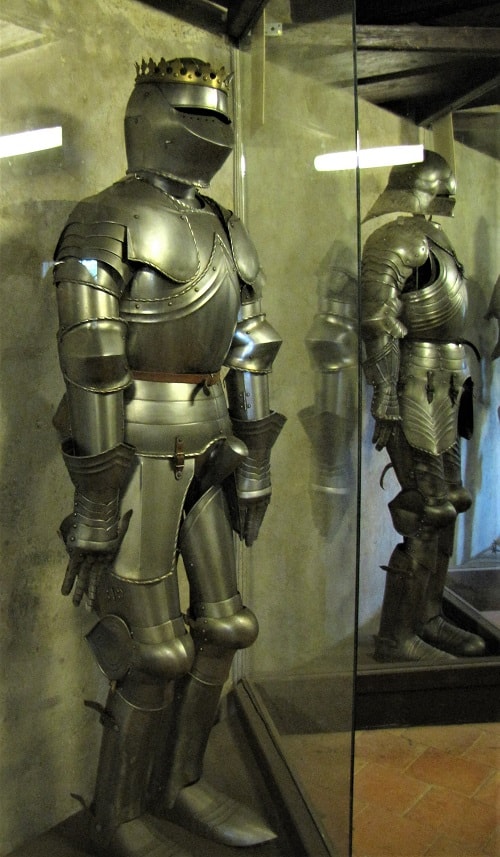
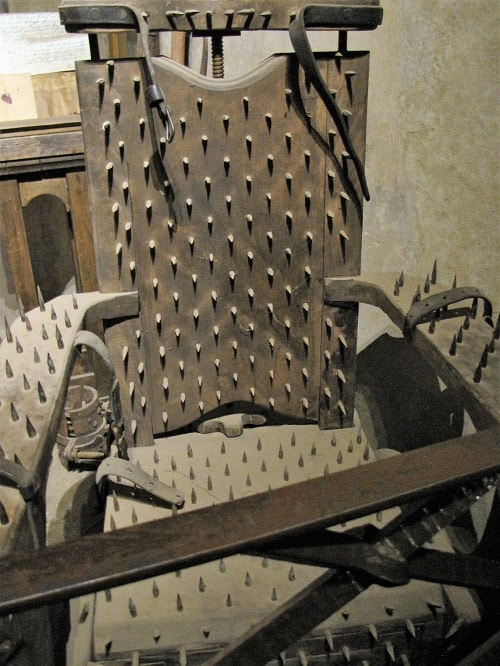
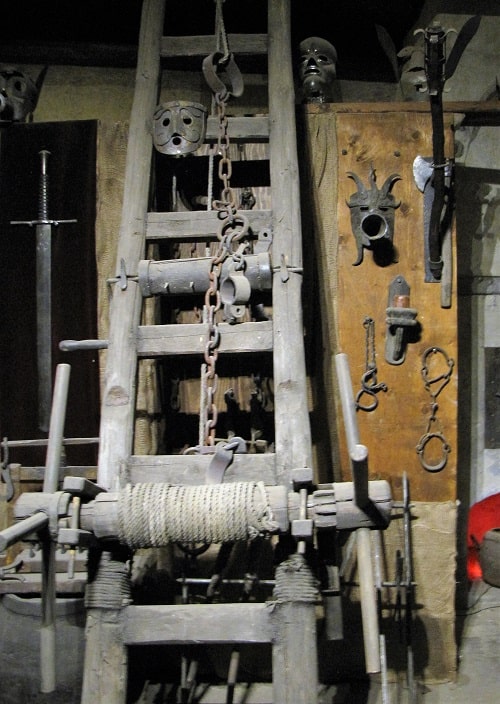
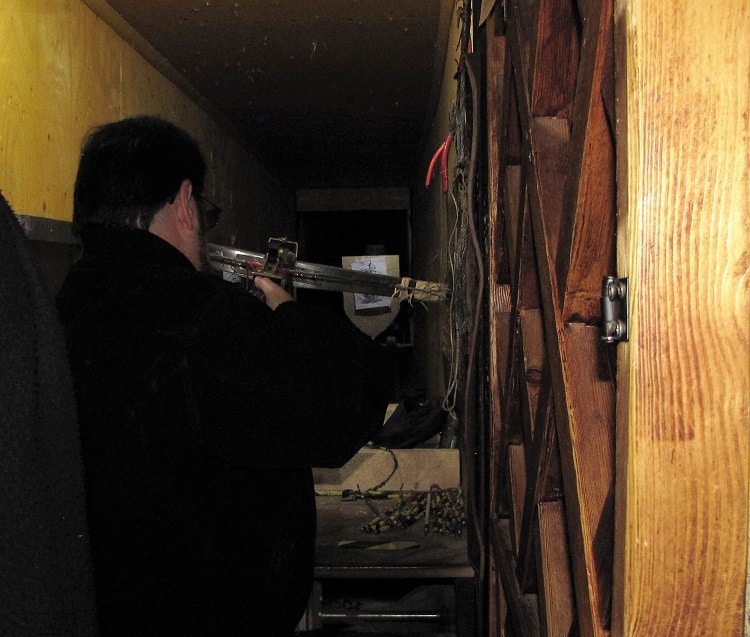
My husband takes a minute to test his skill with the crossbow, and then we begin our trek down from the castle, enjoying the beautiful views in all directions.
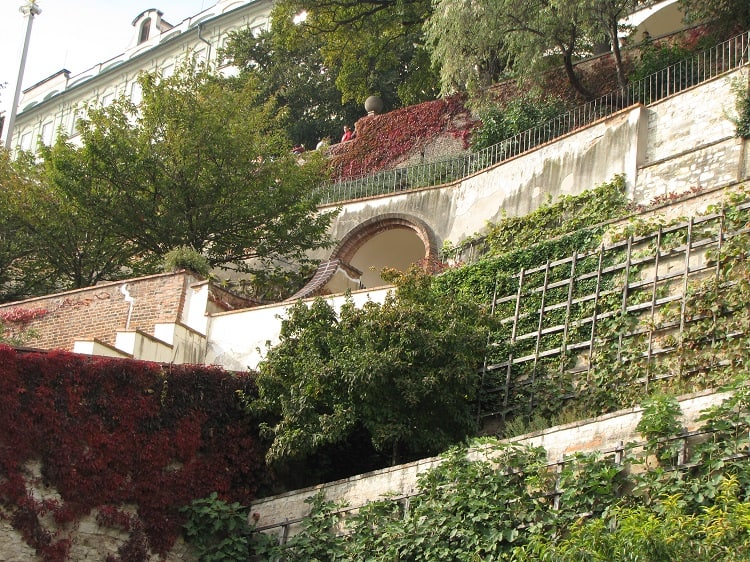
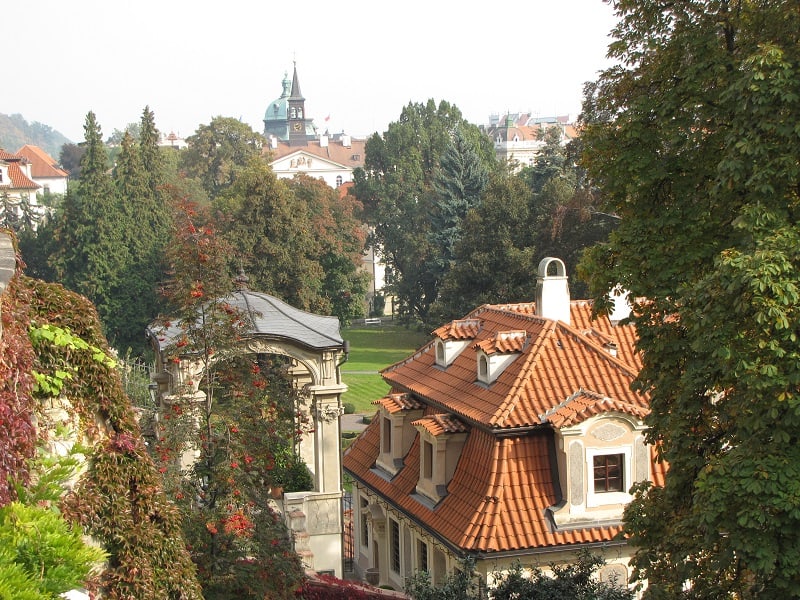
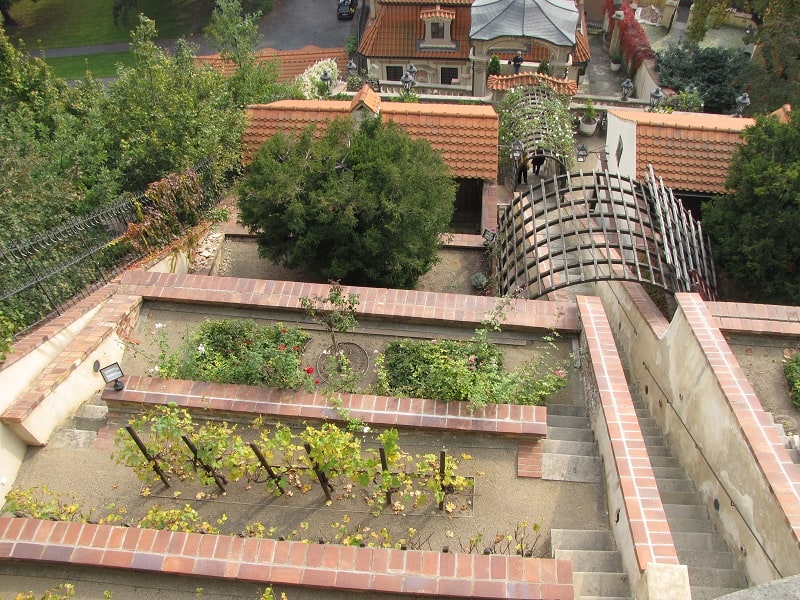
On the day we went to the castle, we logged nearly 7.5 miles of walking. I know because we wear one of those wrist devices that measures all you do. Most of that walking was up hills, up steps, up whatever they could make you walk up. The only good thing about going up is that eventually, you get to go down.
Tour Information
You can “tour” the Castle grounds for free! However, you can purchase a ticket in advance from Get Your Guide for around $20 US. This ticket allows you to skip the lines and visit many of the highlights in the Castle complex.
Last Evening in Prague
This evening we dine at a traditional Czech restaurant. Dinner is delicious. I have roast beef entrée that includes a side of an enormous dumpling (about the size of a baseball).
After dinner, we take our final walk through the old town of Prague, enjoying the sights and sounds, including an amazing street concert, and a gentleman playing glasses!
Planning Our Trip to Visit Prague
My husband and I spend a lot of time planning our trips and use many resources. Understanding the important landmarks and rich history of an area gives your time in a new place meaning. Our plan to visit Prague is no different.
To keep track of all the different parts of our travels, I like to use TripIt. This planning app works for me, but my husband likes paper.
My DH creates a one-page itinerary that we keep in several places. For example, one copy goes into “the binder of all things” related to the trip. This binder has copies of all travel tickets, hotel confirmations, tour confirmations, maps if necessary, etc. The binder is usually about one inch thick, and as we go, he eliminates the pages we no longer need.
Other copies of the itinerary, get laminated in both full-page and half-size. We place these copies in our luggage in the hopes that if the bag is lost on a plane or train, someone will try to reach out and get our stuff back to us.
Why We Still Use Paper
Having our plans both on paper and in digital format comes in handy. There are times when you may not have an internet connection, or your mobile device is out of juice. Not to mention the time in Frankfurt when we had no paper boarding pass and to catch our flight home, Security would only accept the printed receipt and copies of our tickets to allow us through.
Should You Visit Prague By River Cruise or Rail Trip?
Prague is in Central / Eastern Europe where the Capitals are connected by rivers. In the old days, this was necessary for trade (most notably the Danube) and economies. Many people visiting this region will do so on a river cruise, and this is a lovely way to travel.
However, we chose to visit Prague, Budapest, and Vienna by land using the efficient train services available throughout Europe. We booked a European Rail Pass that allows for three days of travel in one month. Rail Europe partners with all the major train carriers in 31 countries in Europe, making this a very efficient way to move around the continent.
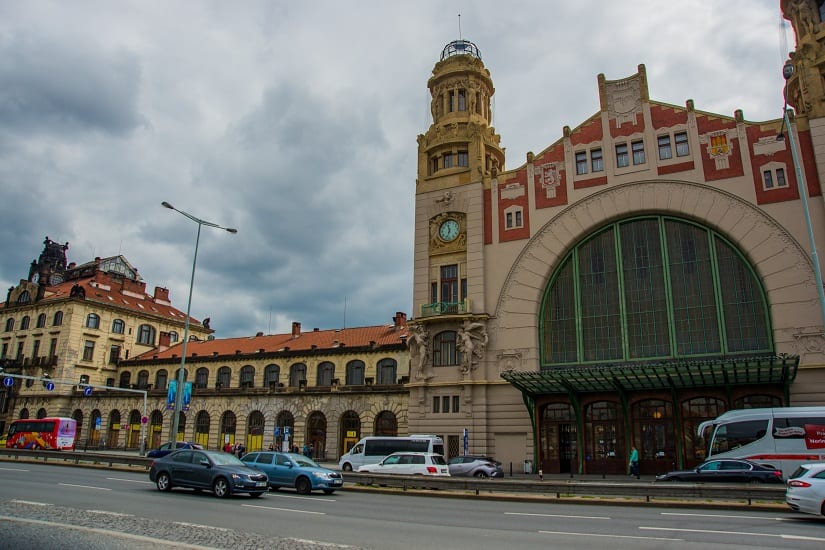
Packing Light
While we always try to be economical in our packing, for this trip we focus on packing light. We will be hauling our luggage along city streets from hotels to train stations and back again. The less we bring, the lighter the load.
I have two carry-ons a regular 21-inch and a smaller under-seat roll aboard. Using packing cubes makes it easy to keep my bag organized and condensed. My two bags hook together for smooth rolling on and off planes and trains and all types of pavement (concrete, cobblestones, asphalt, etc.)
My husband has the same 21-inch carry-on and his large backpack. His backpack probably carries as much if not more than my smaller bag. But I am not a fan of backpacks and have never chosen to go that route
Visiting Prague has been a great way to start our tour of three capitals in central Europe. Tomorrow we leave for Budapest, a seven-hour train ride. If you want to follow along, check out our Budapest Tour, stop 2 of our grand tour of European cities.
